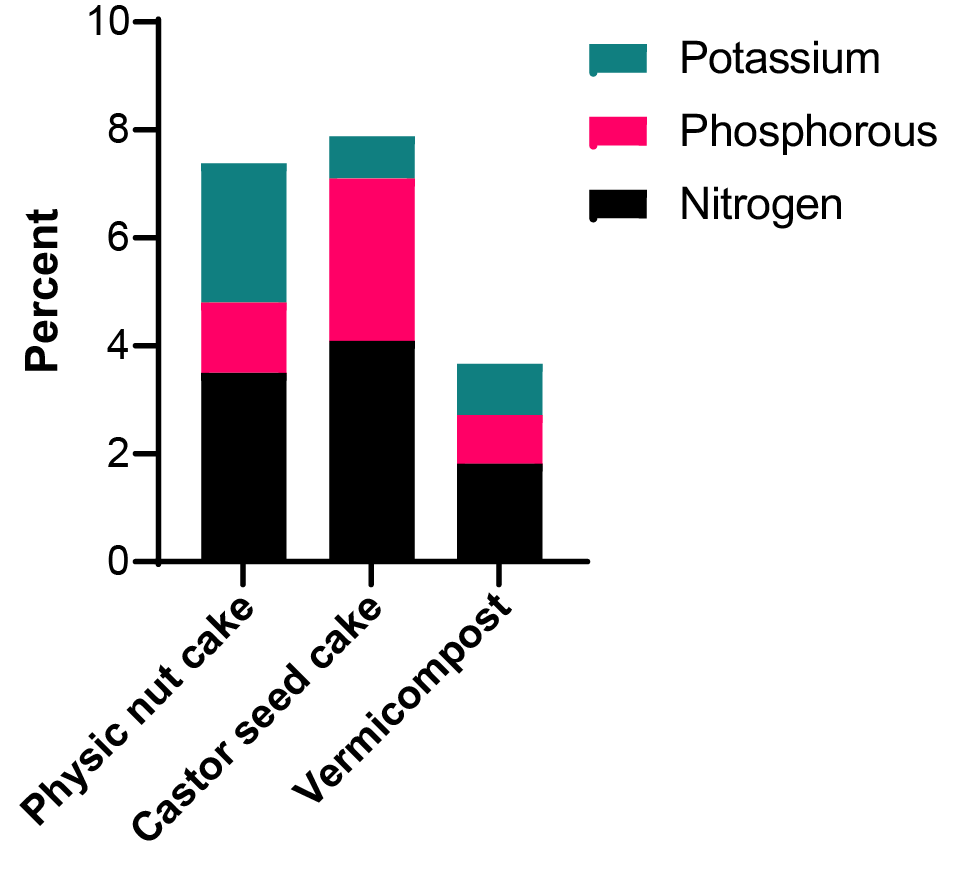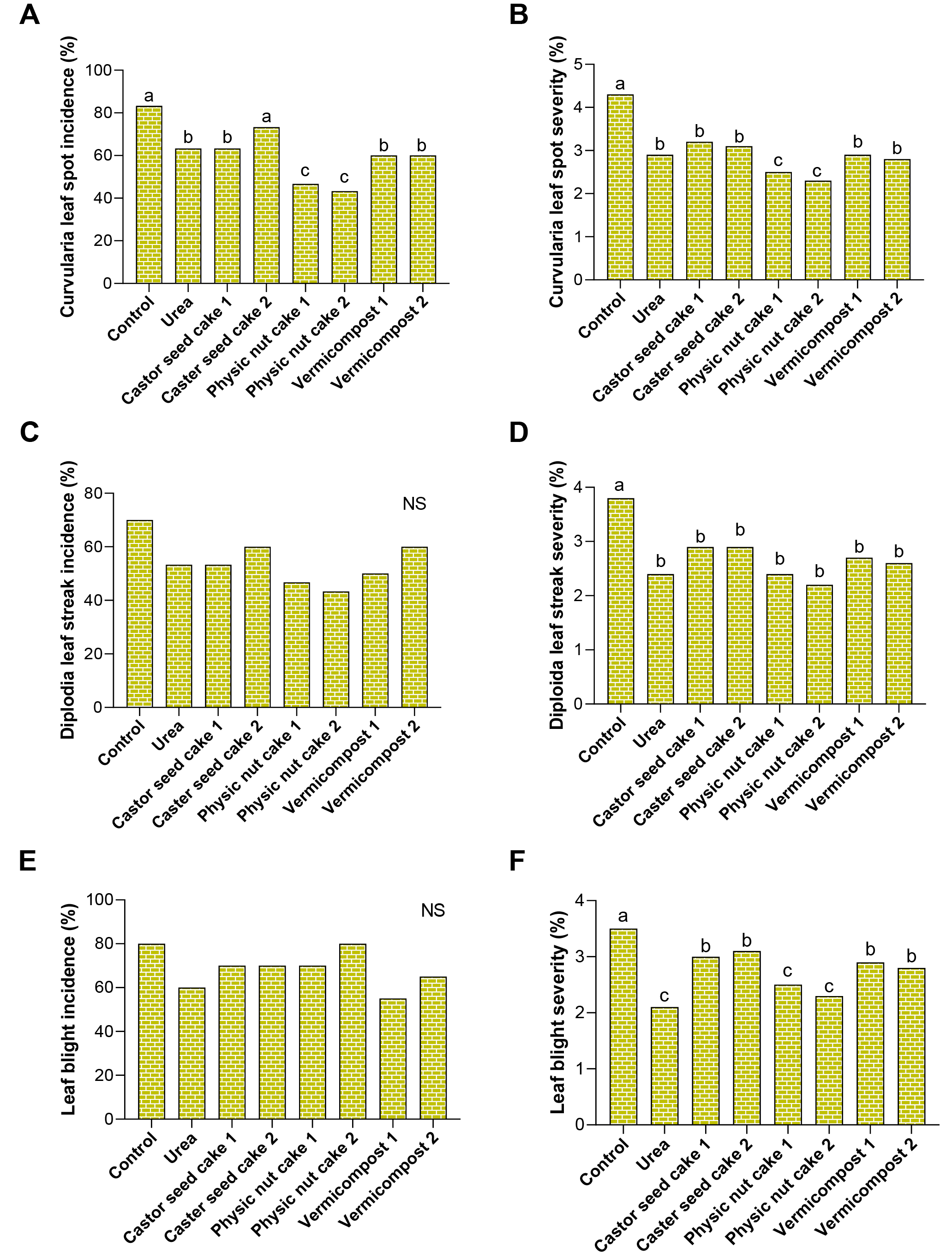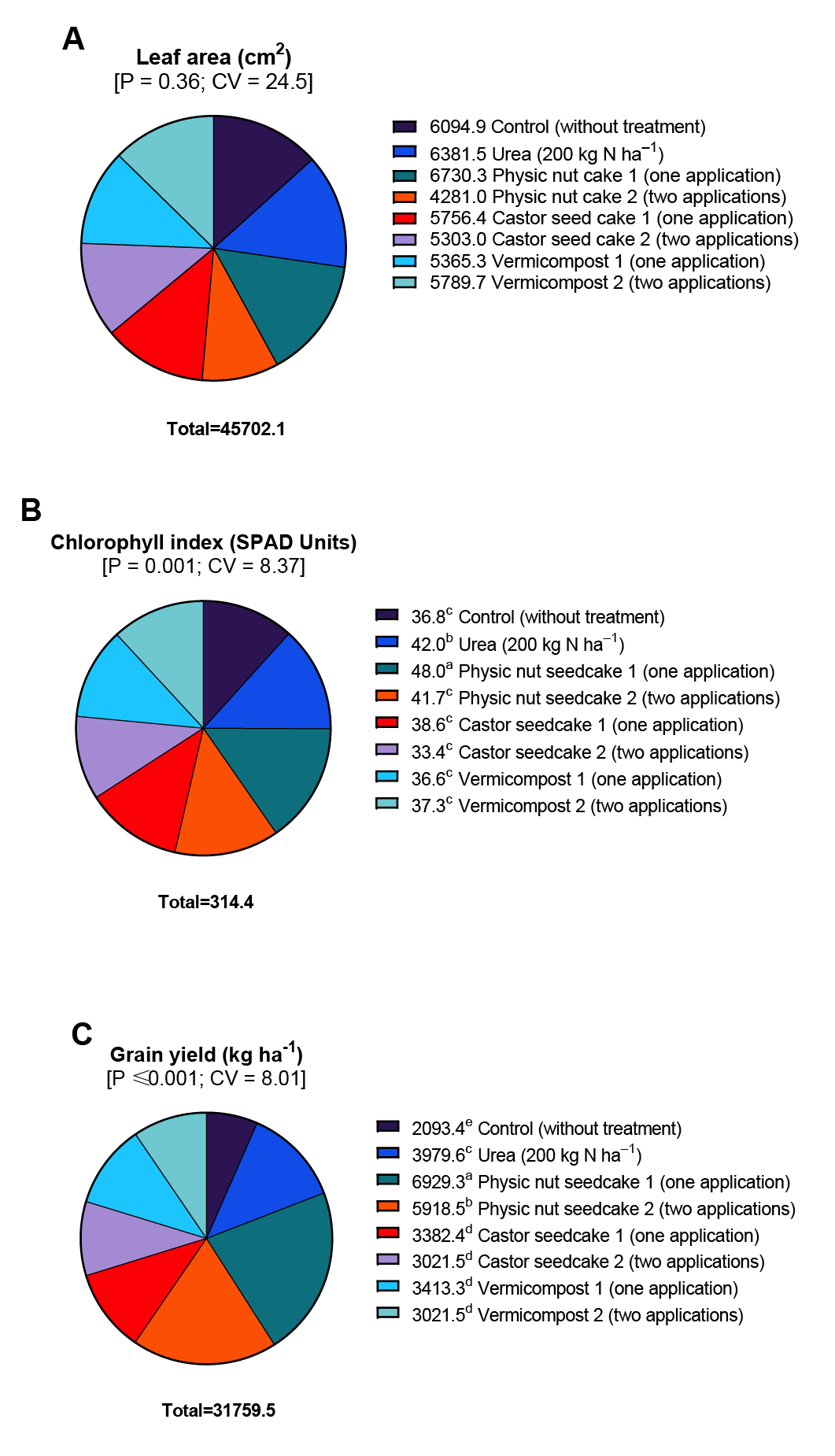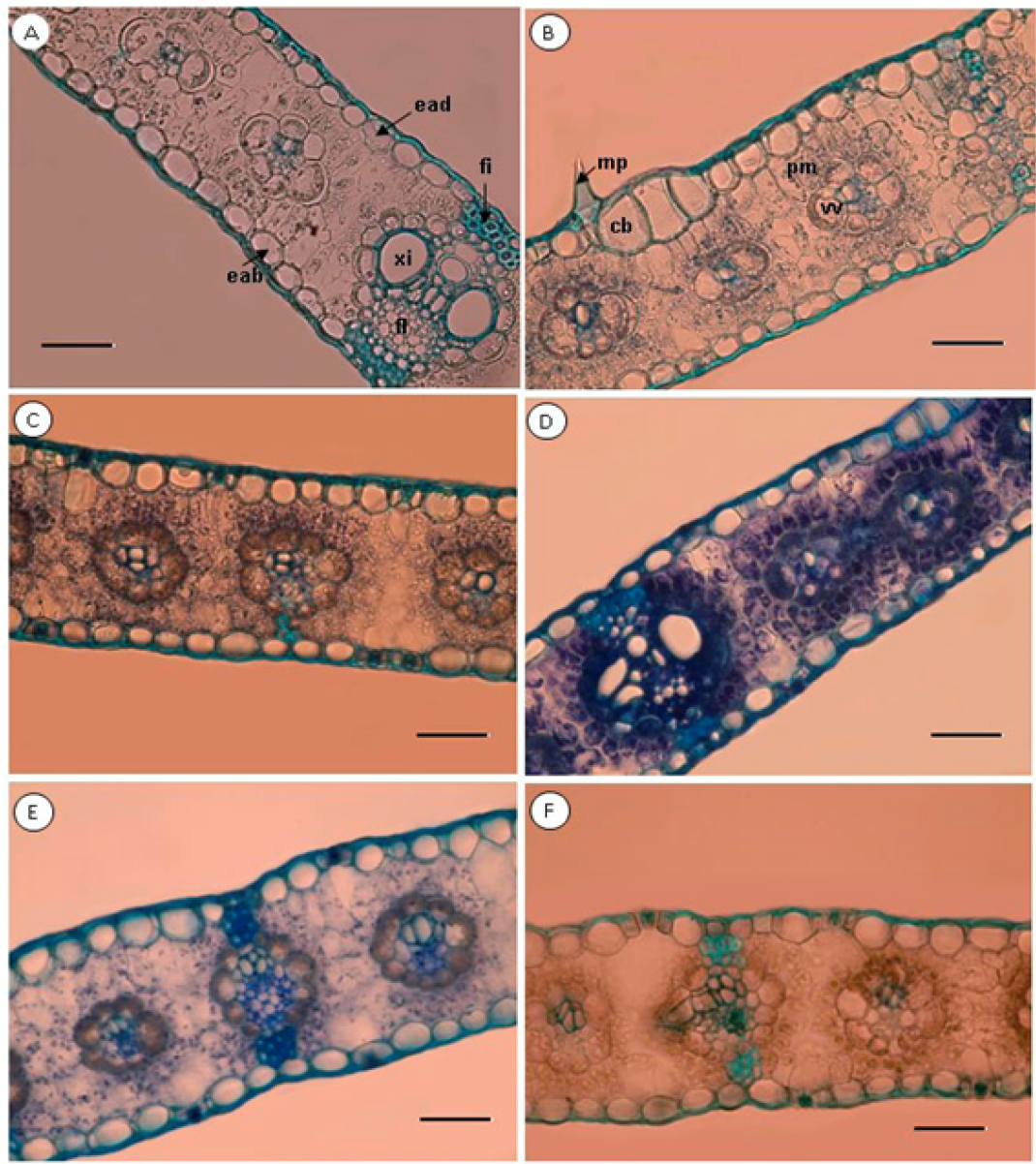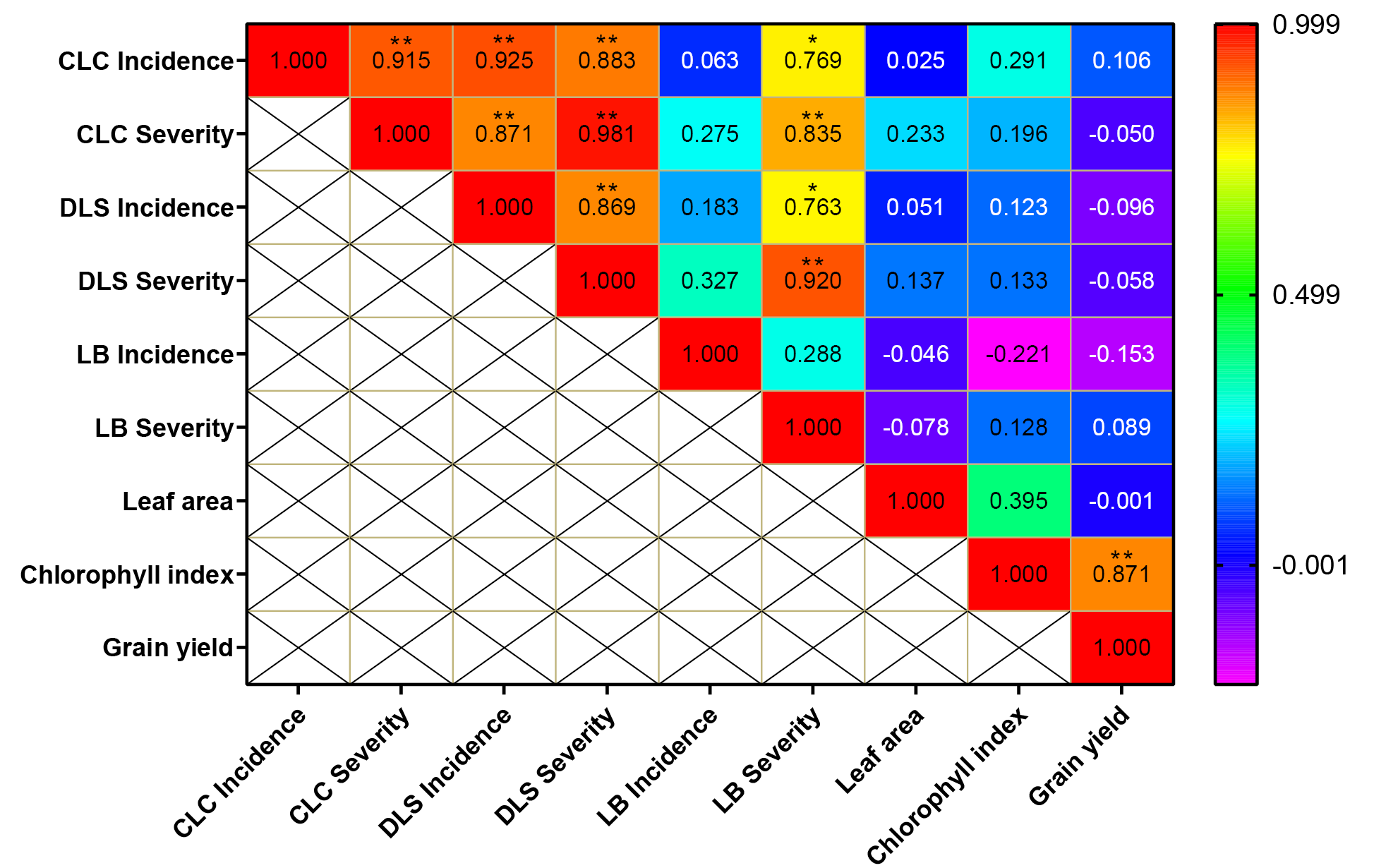Sustainable Maize Production by Organic Amendment – A Field Study from Ecuadorian Coast
Sustainable Maize Production by Organic Amendment – A Field Study from Ecuadorian Coast
José J. Cedeño-Díaz1, Caridad A. Torres-García1, Marina García1, Freddy Zambrano-Gavilanes1, Naga Raju Maddela2* and Felipe R. Garcés-Fiallos3*
Concentrations (%) of nitrogen (N), phosphorus(P), and potassium (K) of the different organic sources applied to maize plants.
Chlorophyll index, fresh weight, height (A), Stem diameter (B); Emergence percent (C); and Dry weight (D) in maize seedlings (six fully emerged leaves) fertilized and dosed with castor seed cake, physic nut cake and vermicompost, using a control with urea and another without fertilizer (unfertilized plants), Lodana, Manabí, Ecuador. Quantities of different treatments were as follows – Urea (0.10 g seedling−1); Caster cake (0.5 g seedling−1); Caster cake (0.9 g seedling−1); Pine nut cake (0.6 g seedling−1); Pine nut cake (1.3 g seedling−1); Vermicompost (0.5 g seedling−1); Vermicompost (0.9 g seedling−1).
Incidence (A, C and E) and severity (B, D and F) of Curvularia leaf spot (Curvularia spp.) (A and B), Diplodia leaf streak (Stenocarpella maydis) (CD), and leaf blight (Bipolaris sp. or Exserohilum sp.) (EF) in maize plants (reproductive phenological stage 5) fertilized with three organic sources (castor bean cake, physic nut seedcake, and vermicompost), using a control with urea and another without fertilizer application.
Leaf area (cm2; A), chlorophyll (SPAD; B) and grain yield (kg ha–1; C) in maize plants fertilized with three organic sources (castor been cake, physic nut seedcake, and vermicompost), using a control with urea and another without fertilizer application.
Cross section of the leaf blade in plants in maize plants fertilized with three organic sources (castor cake, physic nut seedcake, and vermicompost), using a control with urea and another without fertilizer application. A and B: control; C: urea; D: physic nut seedcake; E: vermicompost; F: castor bean cake. ead: adaxial epidermis; eab: abaxial epidermis; fi: fibers; fl: phloem; xi: xylem; mp: microhair; cb: bulliform cell; pm: chlorophyllin parenchyma of the mesophyll; vv: chlorophyllous parenchyma of the vascular sheath. Scale bar: 30 µm.
Pearson correlation (correlation coefficients; *: P ≤0.05; **: P ≤0.01) between all variables analyzed in the field experiment (except histological variables). CLS: Curvularia leaf spot. DLS: Diplodia leaf streak. LB: leaf blight.





